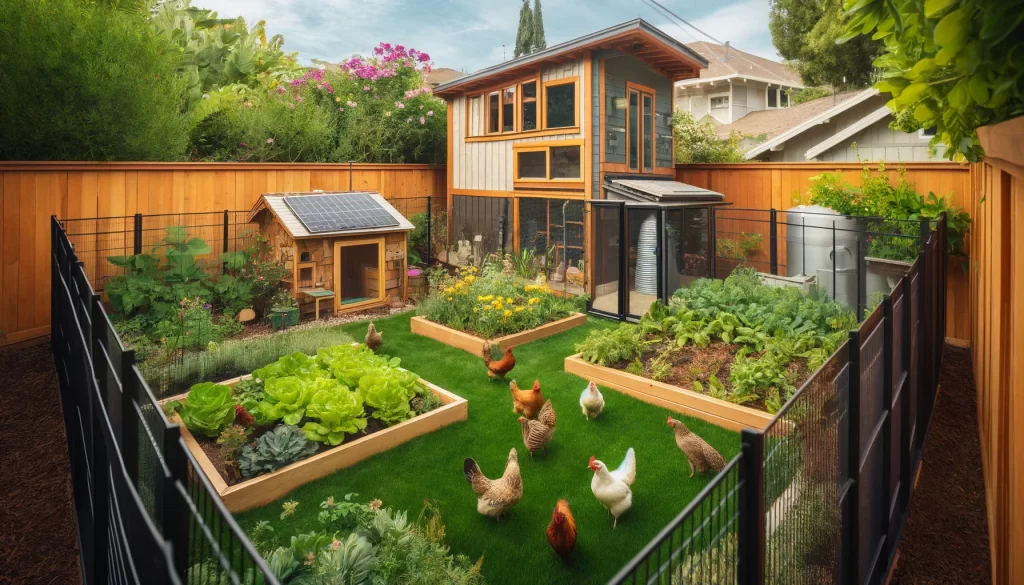
Turn Your Backyard into a Sustainable Paradise: How to Build an Eco-Friendly Chicken Yard
Chicken yard tips. Interested in reducing waste, saving money, and living more sustainably? Discover how to incorporate *eco-friendly practices* into the design of your CHICKEN YARD while still providing all the essentials for happy hens. Join us on this journey towards creating a greener future for both you and your flock.
Welcome to the ultimate guide for DIY enthusiasts and novice homesteaders across the USA who are looking to raise backyard chickens and create a sustainable chicken yard. In this comprehensive resource, we will explore various homesteading ideas, provide practical tips for raising backyard chickens, offer insights into backyard gardening, share DIY homestead projects, and address frequent questions like “Can I raise backyard chickens in my city?” Let us dive in and discover the joys and benefits of incorporating chickens into your homestead.
Section 1: Benefits of Raising Backyard Chickens
Limited access to fresh eggs and poultry products.
Store-bought eggs may lack nutritional value and have harmful chemicals.
Raising backyard chickens can provide you with a sustainable source of fresh eggs, meat, and fertilizer while reducing your carbon footprint.

In many urban and suburban areas, access to truly fresh eggs and poultry products can be surprisingly limited. Supermarkets often stock eggs that are weeks old, and the quality of poultry can vary significantly. Freshness is crucial for both flavor and nutritional value. When eggs are freshly laid, they have higher levels of vitamins A, D, and E, as well as omega-3 fatty acids. Over time, these nutrients degrade, making older store-bought eggs less nutritious. Moreover, the flavor of fresh eggs is notably superior, with richer yolks and a more robust taste. For many people, the convenience of supermarket eggs and poultry products is overshadowed by these significant drawbacks. Raising backyard chickens ensures a continuous supply of fresh eggs, which can be collected daily, guaranteeing maximum nutritional benefits and flavor. Additionally, backyard chickens provide the advantage of knowing exactly what the chickens are fed and how they are treated, which can be a significant concern for those worried about animal welfare and the use of antibiotics and hormones in commercial poultry farming.
The nutritional value of store-bought eggs can be compromised due to several factors. COMMERCIALLY RAISED HENS are often fed a diet designed for maximum production rather than nutritional quality. This can result in eggs with *lower levels of essential nutrients*. Moreover, the conditions in which these hens are raised can be less than ideal. Many commercial operations use cages and confined spaces, which can lead to stress and health issues for the hens. This stress can affect the quality of the eggs they produce. Additionally, commercial poultry farming practices sometimes involve the use of antibiotics and hormones to prevent disease and promote rapid growth. These substances can end up in the eggs and meat, posing potential health risks to consumers. By contrast, raising chickens in your backyard allows you to control their diet and environment. You can choose to feed them organic or non-GMO feed, supplement their diet with kitchen scraps and garden waste, and ensure they have ample space to roam and show natural behaviors. This not only leads to healthier, happier chickens but also results in eggs and meat that are free from harmful chemicals and richer in essential nutrients.
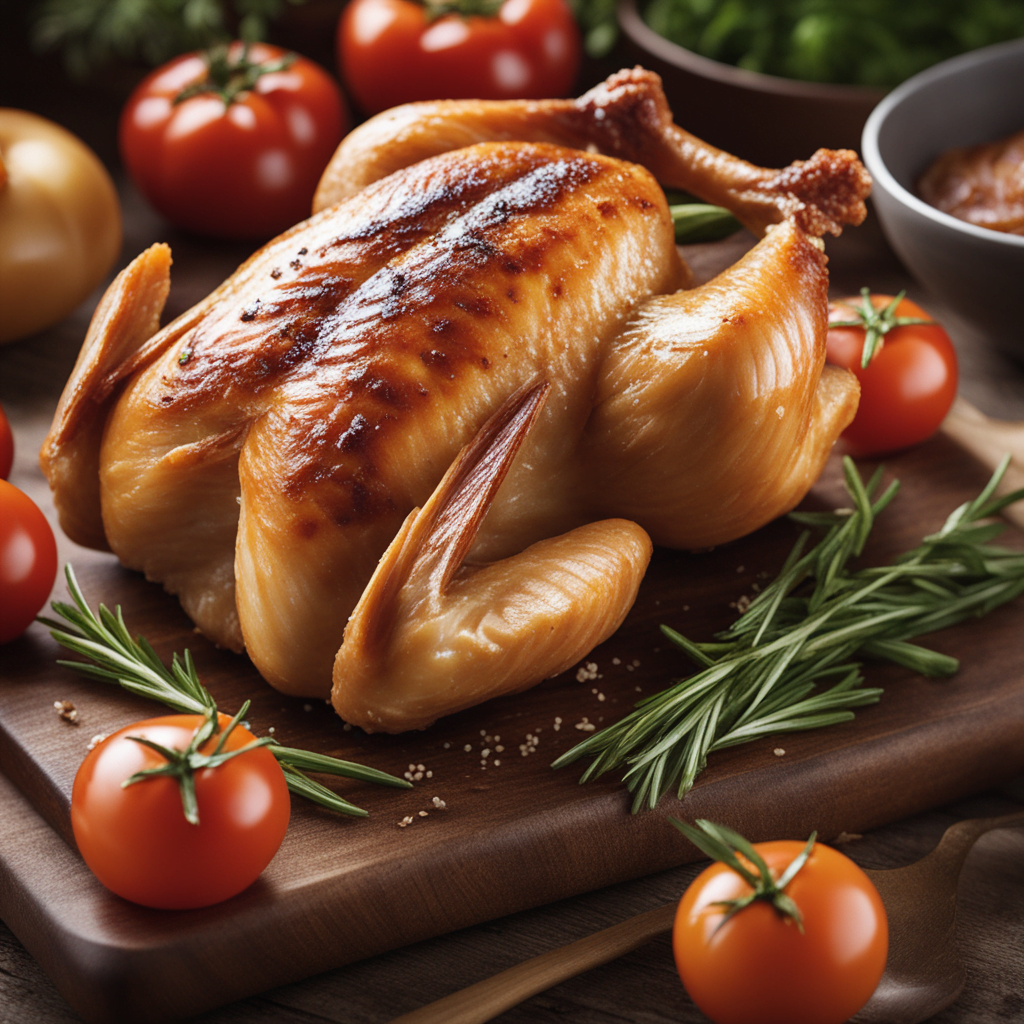
Raising backyard chickens offers multiple sustainability benefits. Primarily, it provides a steady supply of fresh eggs and meat. Chickens are easy to care for and require minimal space, making them suitable for both urban and rural settings. By keeping chickens, you can reduce your reliance on commercially produced eggs and poultry, which often involve significant transportation and packaging resources. This reduction in demand helps decrease the carbon footprint associated with these products. Additionally, chickens produce manure that can be composted and used as a rich fertilizer for your garden. This natural fertilizer can enhance soil health and reduce the need for chemical fertilizers, further contributing to a sustainable lifestyle. Moreover, chickens can help control pests in your garden by eating insects and weeds, reducing the need for chemical pesticides. The presence of chickens can also encourage a more environmentally conscious approach to waste management, as they can consume kitchen scraps and reduce household waste. Overall, raising backyard chickens not only provides high-quality food but also promotes a more sustainable and eco-friendly way of living.
Section 2: Planning Your Chicken Yard
+————————+
| Overhead Netting |
| +—————+ |
| | | |
| | Chicken Coop | |
| | | |
| +——-+——-+ |
| | |
| Feeder | Waterer |
| | |
| Bushes / Trees |
| |
+————————+
Lack of space or knowledge on how to set up a chicken yard.

Not having a proper setup can lead to health issues for your chickens or conflicts with neighbors.
Designing a functional chicken yard with adequate space, shelter, fencing, and nesting areas is essential for happy and healthy chickens.
Chicken yard ideas. One of the most common obstacles to raising backyard chickens is the perceived lack of space or knowledge on how to set up a proper chicken yard. Many people assume that they need extensive land to keep chickens, but this is not necessarily the case. Chickens can thrive in smaller spaces if the yard is well-designed and efficiently managed. Urban and suburban environments can be suitable for raising chickens, provided that local regulations and space constraints are considered. Learning how to set up a chicken yard involves understanding the basic needs of chickens, such as sufficient space for movement, proper shelter, and access to food and water. Educational resources, such as books, online tutorials, and local agricultural extension services, can offer valuable guidance for beginners. Moreover, joining local chicken-raising communities or forums can offer practical advice and support from experienced chicken keepers. By educating oneself and planning carefully, potential chicken owners can overcome the challenges of limited space and knowledge, creating a conducive environment for their flock.
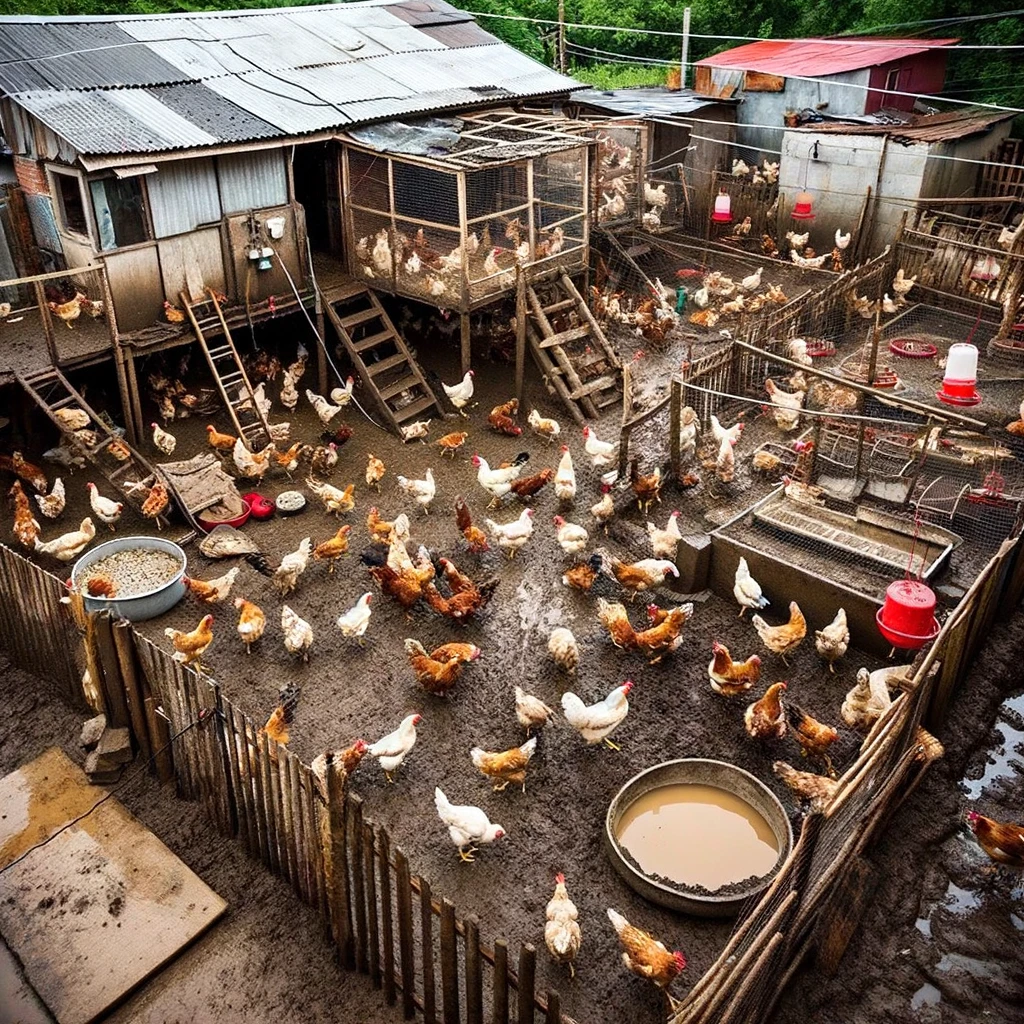
A poorly designed chicken yard can lead to a myriad of problems, both for the chickens and the owner. Health issues are a primary concern; overcrowded or unsanitary conditions can cause stress and disease among the flock. Chickens need adequate space to show natural behaviors such as scratching, dust bathing, and foraging. Without this, they can become stressed, leading to decreased egg production and increased susceptibility to illness. Additionally, improper ventilation in the coop can lead to respiratory issues, while inadequate protection from predators (create a predator-proof chicken yard) can result in frequent attacks. On the other hand, not having a proper setup can also cause conflicts with neighbors. Noise, odors, and pests attracted by improperly kept chicken yards can become nuisances. Ensuring a well-designed setup with consideration for cleanliness and neighbor relations is crucial. Regular cleaning, odor management, and noise control measures, such as soundproofing the coop and choosing quieter chicken breeds, can help mitigate potential conflicts. By addressing these issues proactively, chicken owners can keep a healthy flock and harmonious relationships with their community.
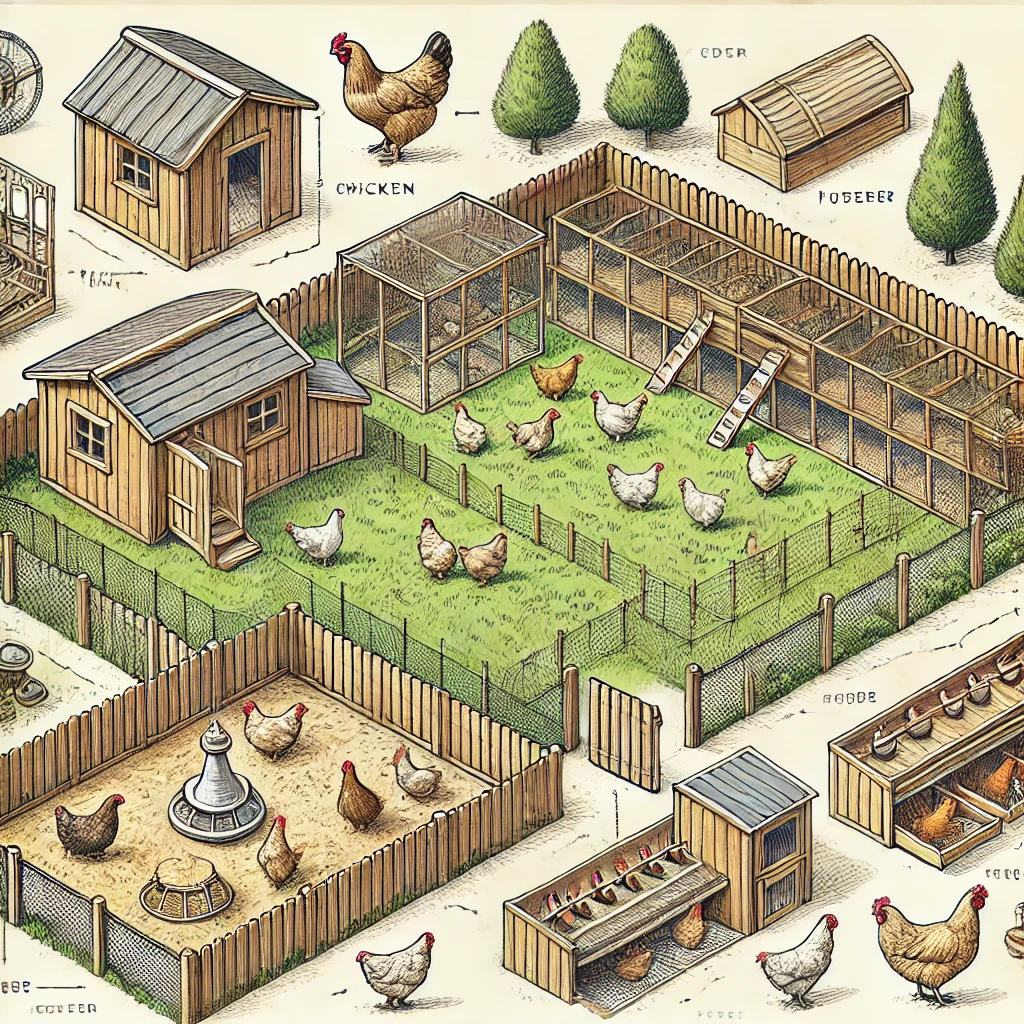
Creating a functional chicken yard involves thoughtful planning and design to meet the needs of the chickens and the owner. Chicken yard equipment would be of importance. Adequate space is paramount; each chicken should have at least four square feet of coop space and 10 square feet of outdoor run space to ensure they can move freely and exhibit natural behaviors. Shelter is equally important to protect chickens from the elements and predators. A well-built coop should provide insulation during freezing weather, ventilation during hot weather, and security from potential predators like foxes and raccoons. Fencing is another critical part; it not only keeps predators out but also prevents chickens from wandering into unwanted areas. The fence should be sturdy and tall enough to deter climbing or flying predators. Nesting areas within the coop should be comfortable and private to encourage egg-laying. Soft bedding materials, such as straw or wood shavings, can make nesting boxes more appealing. Additionally, providing perches for roosting, dust baths for cleaning, and a variety of foraging opportunities can enhance the chickens’ environment. You may also consider to include chicken yard plants. By considering these elements, chicken owners can design a chicken yard that promotes the health, happiness, and productivity of their flock, ensuring a rewarding chicken-raising experience.
Steps to Create a Functional Chicken Yard:
- Chicken Coop:
- Build a secure chicken coop made of sturdy materials like wood.
- The coop should have a slanted roof to allow for water drainage.
- Install windows for ventilation and natural light.
- Include nesting boxes inside the coop, accessible from the outside through a hinged door for easy egg collection.
- Fenced Area:
- Surround the chicken yard with a tall, sturdy fence to protect the chickens from predators.
- The fenced area should have a mix of grass and dirt, giving the chickens a natural environment to forage.
- Include a gate for easy access.
- Feeders and Waterers:
- Place feeders and waterers around the yard strategically, ensuring all chickens have access to food and water.
- Shade and Shelter:
- Plant a few trees or bushes in the yard to provide shade during hot weather.
- Ensure there’s enough space for the chickens to roam freely while having access to shelter.
- Maintenance:
- Keep the yard clean and well-maintained, regularly checking for any repairs needed.
- Ensure the chickens appear healthy and content, with access to fresh food and water daily.
Section 3: Sustainable Practices for Chicken Yard Keeping
Environmental impact of traditional farming practices.
Industrial agriculture contributes to pollution, deforestation, and animal cruelty.
By practicing sustainable chicken yard keeping methods such as composting waste, using natural feed supplements, rotating grazing areas, and implementing predator-proofing measures, you can minimize your environmental footprint.
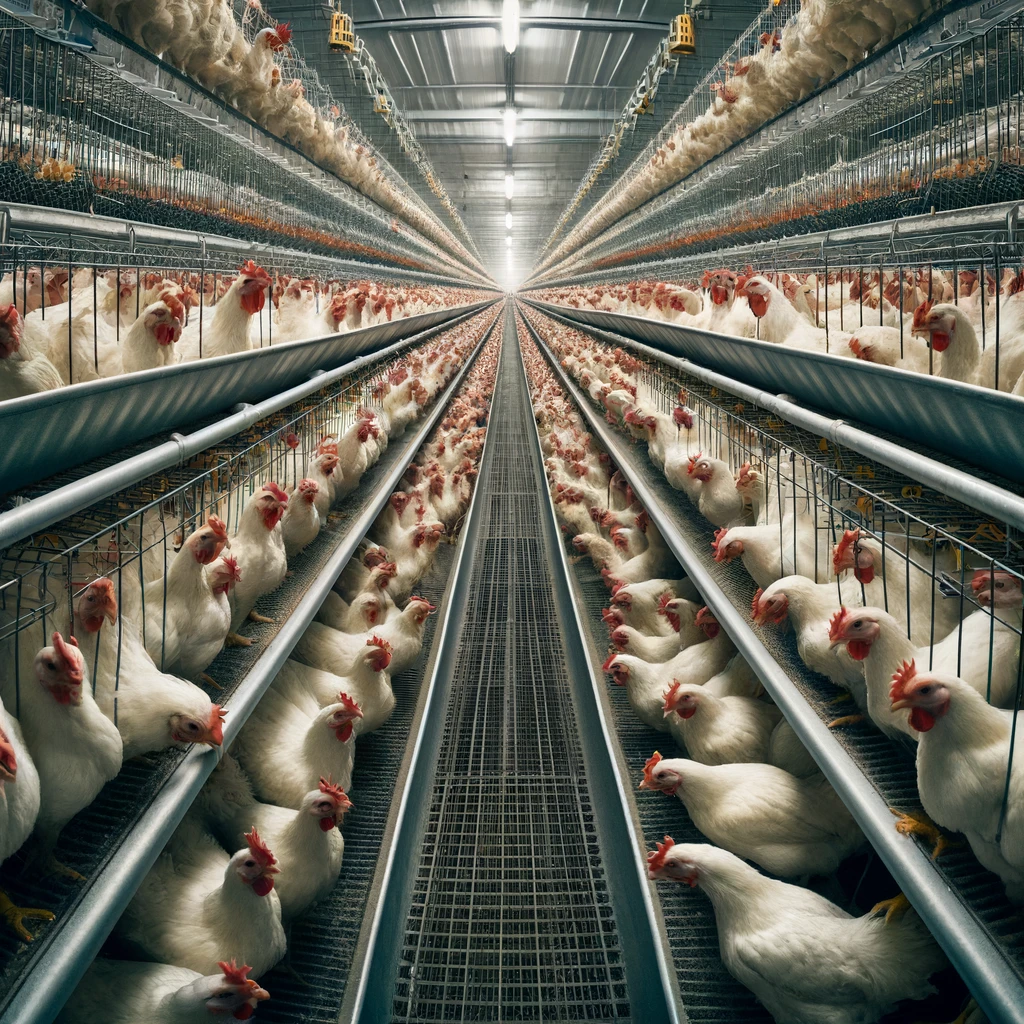
Traditional farming practices, particularly in the realm of industrial agriculture, have significant environmental impacts. These practices often prioritize high yields and efficiency over sustainability and ecological balance. For example, large-scale poultry farms can contribute to pollution through the release of harmful chemicals and waste products into the environment. Manure runoff from these farms can contaminate water sources, leading to nutrient pollution and harmful algal blooms that disrupt aquatic ecosystems. Furthermore, the extensive use of synthetic fertilizers and pesticides in industrial farming can degrade soil health, reduce biodiversity, and harm non-target species, including beneficial insects and wildlife. Deforestation is another critical issue, as land is cleared to make way for expansive agricultural operations, resulting in habitat loss and increased carbon emissions. Additionally, the high-density living conditions and practices used in factory farming often lead to severe animal welfare concerns, including overcrowding, restricted movement, and poor living conditions for the animals. These factors collectively contribute to the unsustainable nature of traditional farming practices, highlighting the urgent need for more environmentally conscious approaches to agriculture.
Industrial agriculture’s focus on maximizing production has led to significant environmental and ethical issues. Pollution from these operations is widespread, with the use of synthetic fertilizers and pesticides leading to soil degradation, water contamination, and air pollution. The runoff from poultry farms often has elevated levels of nitrogen and phosphorus, which can pollute nearby water bodies and lead to eutrophication, causing dead zones where aquatic life cannot survive. Deforestation for agricultural expansion worsens climate change by releasing stored carbon dioxide into the atmosphere and destroying habitats essential for wildlife. This loss of biodiversity can have far-reaching effects on ecosystems and the services they provide, such as pollination and water purification. Additionally, the intensive farming practices commonly used in industrial agriculture raise serious animal welfare concerns. Chickens in factory farms are often kept in overcrowded, confined spaces with limited access to natural light and outdoor areas, leading to stress, disease, and behavioral problems. The routine use of antibiotics to prevent illness in these conditions can also contribute to the development of antibiotic-resistant bacteria, posing a public health risk. These issues underline the need for more humane and sustainable farming practices.
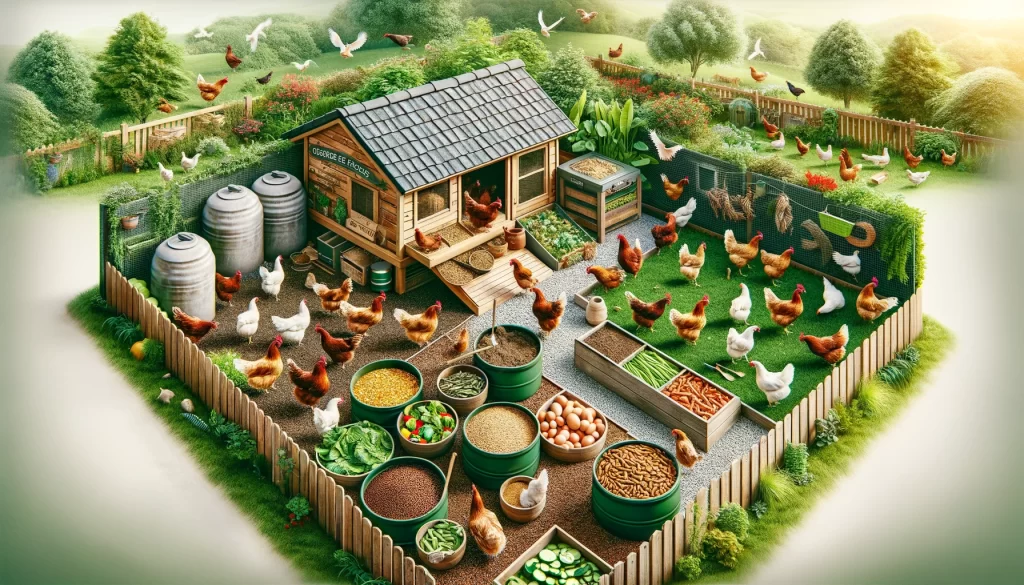
Sustainable chicken keeping offers a practical alternative to the environmental and ethical issues associated with industrial agriculture. By adopting eco-friendly practices, backyard chicken keepers can significantly reduce their environmental footprint. Composting chicken waste is one effective method, as it transforms manure into nutrient-rich compost that can enrich garden soil, reduce waste, and decrease the need for synthetic fertilizers. Using natural feed supplements, such as kitchen scraps and garden greens, can enhance the chickens’ diet while reducing reliance on commercial feeds, which often have a large environmental footprint due to their production and transportation. Rotating grazing areas, or rotational grazing, is another beneficial practice that prevents overgrazing, promotes soil health, and allows vegetation to recover. This method also helps distribute manure more evenly, further enhancing soil fertility. Implementing predator-proofing measures, such as secure fencing and well-designed coops, ensures the safety of the chickens without resorting to harmful chemicals or traps. These practices not only protect the chickens but also keep a balance with local wildlife. By integrating these sustainable methods, chicken keepers can create a more environmentally friendly and humane system that supports the health of their flock and the planet.
Section 4: Integrating Chickens into Your Garden
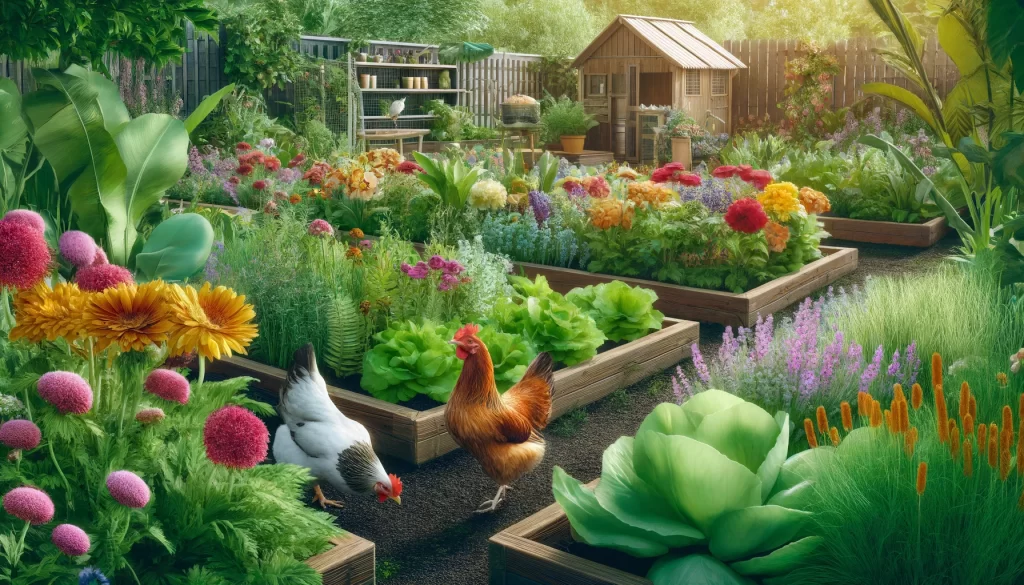
Pest control challenges in organic gardening.
Pests can damage crops and reduce yields without proper management strategies.
Chickens are excellent natural pest controllers that can help keep insects at bay while fertilizing your garden with their droppings. Integrate them into your garden rotation plan for mutual benefits.
Organic gardening aims to grow plants without the use of synthetic pesticides and fertilizers, promoting a healthier ecosystem and safer food. However, this approach often presents significant pest control challenges. Without chemical interventions, gardeners must find alternative methods to protect their crops from a variety of pests such as insects, rodents, and birds. Insects like aphids, caterpillars, and beetles can quickly infest plants, consuming leaves, stems, and fruits, leading to reduced yields and sometimes complete crop failure. Moreover, pests can send diseases that further harm plants. Organic gardeners often employ strategies like crop rotation, companion planting, and the use of natural predators to manage pests, but these methods require careful planning and constant monitoring. Physical barriers, such as row covers and nets, can provide some protection but are labor-intensive and may not be effective against all pests. Biological controls, like introducing beneficial insects, can help, but they need a balanced environment to thrive. Despite these challenges, many gardeners are committed to organic practices due to their benefits for soil health, biodiversity, and human health, needing innovative and sustainable pest management strategies.
Effective pest management is crucial in any gardening practice, but it becomes particularly challenging in an organic garden where synthetic chemicals are not an option. Pests can cause considerable damage to crops, affecting both the quality and quantity of the harvest. Insects such as aphids, which feed on plant sap, can weaken plants, and make them more susceptible to diseases. Caterpillars and beetles can defoliate plants, reducing photosynthesis and stunting growth. Additionally, some pests, like nematodes, attack plant roots, disrupting nutrient uptake and leading to poor plant health. Without proper management, these issues can lead to considerable yield losses, undermining the gardener’s efforts. Organic gardeners often turn to integrated pest management (IPM) strategies, which combine cultural, mechanical, biological, and occasionally chemical methods in a sustainable way. Techniques such as crop rotation and intercropping can disrupt pest life cycles, while handpicking pests and using traps can physically remove them from the garden. Biological controls, like encouraging natural predators or using microbial insecticides, help keep pest populations at manageable levels. Successful pest management in organic gardening requires a deep understanding of pest ecology and a proactive approach to monitoring and intervention.
Integrating chickens into your garden can provide an effective and sustainable solution to pest control challenges. Chickens are natural foragers and can significantly reduce pest populations by eating insects such as beetles, grubs, and caterpillars that damage plants. This natural pest control method not only helps protect crops but also reduces the need for chemical interventions, aligning with organic gardening principles. Chickens’ scratching behavior can help aerate the soil, promoting better root growth and soil health. Additionally, their droppings serve as a potent organic fertilizer, rich in nitrogen, phosphorus, and potassium, which are essential nutrients for plant growth. When chickens are incorporated into a garden rotation plan, they can be moved to different areas of the garden, allowing them to fertilize the soil evenly and control pests across the entire space. This rotational grazing can also prevent over-concentration of waste in one area, mitigating the risk of nutrient runoff and soil degradation. However, it is essential to manage chickens properly to avoid potential damage to young plants and crops. Using movable chicken coops, also known as chicken tractors, can help confine chickens to specific areas, ensuring they provide their benefits without harming delicate plants. By thoughtfully integrating chickens into the garden, gardeners can achieve a harmonious and productive system that uses the natural behaviors of chickens for mutual benefit.
Section 5: Legal Considerations for Urban Chicken Keeping
Zoning restrictions or ordinances prohibiting backyard chickens in urban areas.
Many cities have strict regulations that limit or ban chicken keeping within city limits.
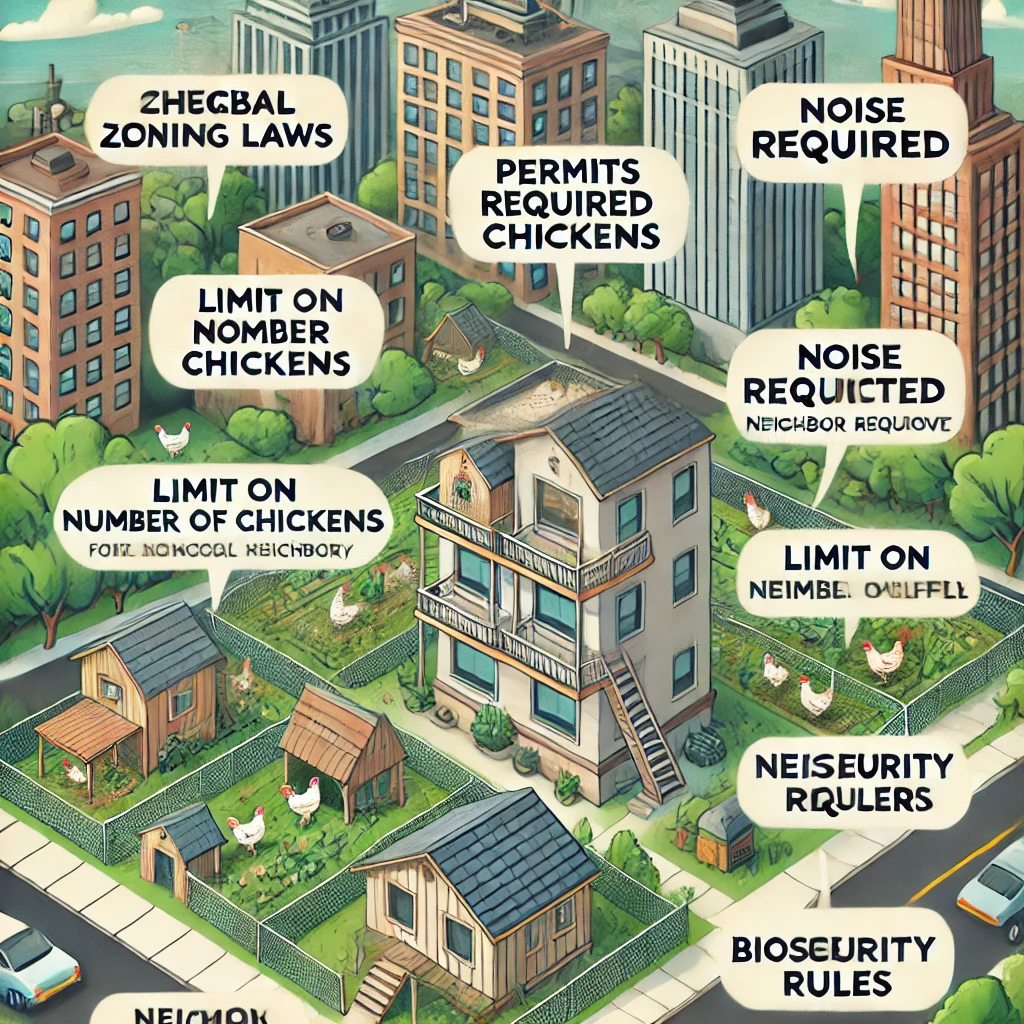
Zoning restrictions and ordinances are common legal hurdles for those wishing to keep backyard chickens in urban areas. These regulations are designed to manage land use and ensure community standards, but they can vary significantly from one municipality to another. Some cities may outright prohibit the keeping of chickens, while others impose strict limitations on the number of birds, their housing, and even their breeds. The primary concerns driving these regulations include noise, odors, and the potential for attracting pests. Additionally, there may be fears about the spread of diseases from poultry to humans, particularly in densely populated areas. Navigating these zoning laws requires prospective chicken keepers to thoroughly research local ordinances and engage in discussions with city officials or neighborhood associations. In some cases, obtaining permits or undergoing inspections might be necessary. Understanding and following these regulations is crucial to avoid fines, legal disputes, or being forced to remove the chickens. Advocates for urban chicken keeping often work to educate communities and policymakers about the benefits of backyard chickens and to push for more lenient and supportive regulations.
Urban chicken keeping is subject to a wide range of strict regulations that can significantly limit or entirely ban the practice within city limits. These regulations are often implemented to address community concerns about noise, smell, and public health. Noise complaints, particularly from roosters, are a common issue, leading many cities to ban roosters while allowing hens. Odor and cleanliness are other major concerns, with regulations often stipulating specific requirements for coop construction, maintenance, and waste management to minimize smells and attractants for pests. Public health concerns include the risk of zoonotic diseases, such as salmonella, which can be transmitted from chickens to humans. Cities may also impose regulations on the slaughter of chickens, often prohibiting it within residential areas to keep community standards. Prospective chicken keepers must be aware of these regulations and adhere to them. Failure to comply can result in penalties, forced removal of the chickens, and strained relations with neighbors and local authorities. In cities with restrictive regulations, enthusiasts often form advocacy groups to campaign for more chicken-friendly policies, emphasizing the educational, environmental, and health benefits of urban chicken keeping.
For those considering raising chickens in urban settings, understanding, and complying with local regulations is essential to ensure a successful and conflict-free experience when creating a chicken yard shelter. Start by researching local zoning laws and ordinances specific to your area. This information is typically available on city or county government websites or through direct contact with local planning departments. Once you are familiar with the legal landscape, ensure that your chicken keeping practices align with all requirements. This may include obtaining necessary permits, constructing coops that meet specific standards, and adhering to limits on the number of chickens you can keep. Regularly keeping the cleanliness of the coop and managing waste properly are also crucial to prevent odors and attractants for pests, which are common concerns in urban areas. Engaging with your neighbors early on can help address any concerns they might have and prove your commitment to responsible chicken keeping. Building a supportive network within your community can also be beneficial, as local urban farming groups or chicken keeping associations often provide resources, support, and advocacy for more lenient regulations. By proactively addressing legal and community concerns, you can enjoy the benefits of keeping chickens while fostering a positive relationship with your neighbors and local authorities.
Final thoughts, by following these guidelines, remember, whether you are an experienced homesteader or just starting out on your self-sufficient journey, now is the time to take action.
Together, let us create a more sustainable future through responsible chicken keeping practices on our homesteads.


